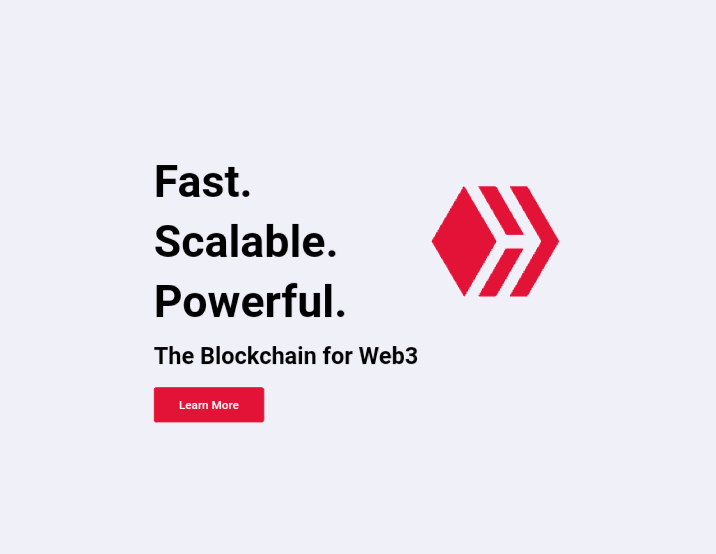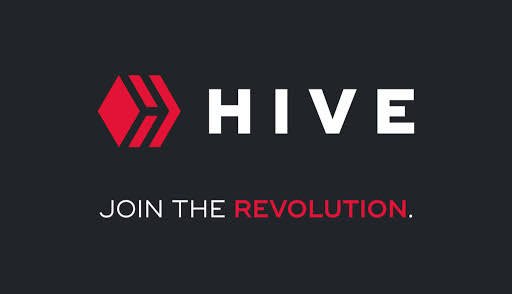Hive Blockchain: A Panacea to Scalability Problem
Scalability is one of the major flaws and problems found in the cryptosphere. In some ways, the deficiency of blockchain scalability has hindered the mass adoption of cryptocurrency and blockchain technology.
Fact is, we are in an era where everyone wants it quick and fast; no one wants to wait 10 - 20 minutes for a transfer to be completed. It is therefore important that this issue be tackled.

Taking a look at many crypto projects and blockchains, you'll find out that transactions take a long time before being completed. While some cannot handle many transactions concurrently. Meaning, only a few transactions can be completed per second.
Take, for example, Bitcoin and Ethereum, these are the two top cryptos in the world but they are faced with this issue of scalability. Bitcoin network can only take about 7 transactions per second whereas Visa can comfortably handle more than a thousand transactions per second. Such a huge disparity there.
This issue is present in these major public blockchain applications due to the nature of their consensus algorithms. Bitcoin for example uses the proof-of-work consensus algorithm. With POW, every individual node can store and execute computational tasks to validate every transaction in the blockchain network.
Consequently, there is always an increase in the number of nodes. It is this continuously growing number of nodes that leads to the blockchain scalability problem.
In another scenario, we have seen many blockchains crash or get paused because too many users initiated transactions. It is a major setback for the technology when large transactions cannot be handled. With this, it shows that crypto isn't even ready for mass adoption.
What is Blockchain Scalability?
Scalability refers to the growth in the throughput rate of a blockchain system. In other words, the growth of a blockchain network in terms of transaction processing speeds and processing capacity to handle the inclusion of additional applications and increased user operations is known as blockchain scalability.
Blockchain scalability is usually measured in transactions per second. On the other hand, "throughput” refers to the number of transactions handled by a system per second. It is also the time required for confirming one transaction and the size of the block for the transaction.
As aforementioned, a lot of blockchains are characterized by a slow transaction speed while on a few of a fast transaction speed. This is a function of the consensus algorithm adopted by the network. Blockchain consensus algorithms include; proof-of-work (PoW), proof-of-stake (PoS), decentralized proof-of-stake (dPoS)among others.
Proof-of-work is the first algorithm ever known and used. Its characteristic properties are high security and decentralization but transaction speed (scalability) is slow. Similarly, Proof-of-Stake (PoS) is a distributed consensus process used on the blockchain network. With this algorithm, users can use their stake to authenticate block transactions.
Over the years, it has been proven and seen that proof-of-stake and decentralized proof-of-stake consensus algorithms are better than proof-of-work in terms of scalability and decentralization. However, PoW networks tend to be more secure.
HIVE: A Highly Scalable Blockchain
Scalability entails fast transaction speed and the capacity for a blockchain to handle or process thousands of transactions per second. Hive blockchain which has both Layer 1 and Layer 2 was designed and structured to be highly scalable.

With the Hive blockchain, there is no waiting time when a user initiates an operation like making a transfer, delegating, and/or staking. The transaction speed on the Hive network is a matter of microseconds.
More so, Hive blockchain can handle thousands of transactions per second without the network getting congested and slow. Aside from high scalability, Hive equally provides top-notch security and decentralization.
Hive blockchain is indeed the blockchain of the future (and now) because it is capable of accommodating multiple transactions concurrently and with no gas fees required.
Hive blockchain is one of those few blockchain projects with the capacity to foster mass adoption because of its fee-less transaction cost, high scalability (transaction speed), decentralization, and security.
Final Thoughts
The scalability factor is what will enable blockchain networks to compete with the traditional and centralized networks for transaction volumes and user engagements. If the cryptocurrency technology truly desires mass adoption then, the problem of scalability and security should be tackled. However, with more blockchains like Hive, the issue of scalability will be in the past.
Posted Using LeoFinance Beta


https://twitter.com/Iam_LilTom/status/1501416832997150723
The rewards earned on this comment will go directly to the person sharing the post on Twitter as long as they are registered with @poshtoken. Sign up at https://hiveposh.com.
Have encountered this issue of scalability very long a time,kept on thinking what that might be as I was in a haste. Truly speaking if this problem of scalability is tackled well, just imaging how swift,fast, easy accessing crypto world will be.
Thanks bruh for bringing up this write up
It's a known problem and I believe every crypto user has experienced the bad effect of poor transaction speed. However, as the technology continues to develop and mature, things will roll in place.
Posted Using LeoFinance Beta